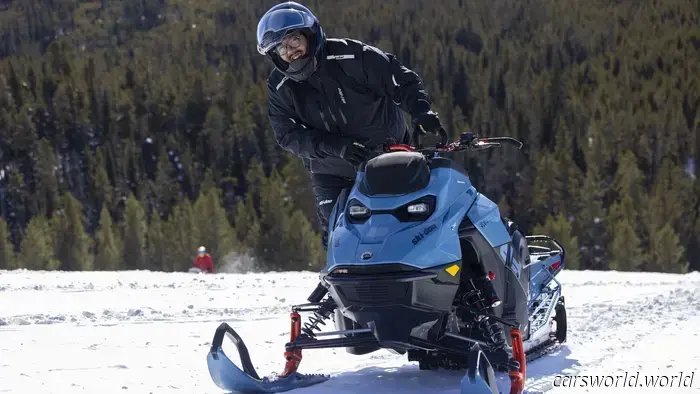
Snowmobiling in Yellowstone is challenging, but it's worth braving the cold for.
Eric Parker
After experiencing shifter karts, dirt bikes, and track days in cars, I thought that riding a snowmobile around Montana would be a relaxed and enjoyable ride. It was indeed cool, but definitely cold. However, speeding through the snowy expanses of Yellowstone on powerful Ski-Doos was both physically and mentally demanding, exciting, and tiring. It was tough, but I loved every minute of it.
Perhaps my age, lack of fitness, and unfamiliarity with high-powered machines played a role, but navigating through the park was no leisurely stroll.
You can read about my journey riding multiple Ski-Doo models across Yellowstone National Park and West Yellowstone here. I provide details on each model I tried, their functionalities, and the types of terrain they are suited for—such as deep snow, trails, or utility use. Most importantly, I share how my entire viewpoint on snowmobiles shifted after that experience and the reasons behind it.
Eric Parker
The Physical Demands of Snowmobiling
Operating a go-kart, side-by-side vehicle, personal watercraft, or nearly any motorized recreational device requires a certain degree of physical effort that many are not accustomed to. This is because most of us lead relatively comfortable lives in our standard vehicles, which feature cozy seats, plush suspensions, power steering, windshields, heating, air conditioning, and more. Unless you're driving a Lotus Elise or an Alfa Romeo 4C, driving a conventional car is not a workout.
My initial revelation while riding a snowmobile was realizing the significant effort needed to steer it. The handlebars control two skis at the front, which, in theory, direct the machine. However, in practice, to achieve a quick and sharp turn, you have to lift yourself off the seat and lean over the side. With some of the smaller and more nimble Ski-Doos, this wasn't too challenging, but one particular model I rode weighed close to 700 pounds when dry, making it quite the physical task. Since shifting my weight to turn isn’t something I typically do in my Honda Civic, it took me a while to adjust.
Another aspect I found different was the throttle. Unlike a motorcycle, where you twist the grip to accelerate, it resembles a waverunner’s throttle, operated by a small lever using your right thumb. Although mostly fine, after several hours of riding, my thumb started to feel the strain. Furthermore, navigating uneven terrain at speed proved challenging, as I had to maintain a steady throttle while gripping with my other four fingers. Often, I had to decide between holding on tightly or accelerating. With practice, I bet this becomes more manageable.
Eric Parker
Then there’s the weather factor. There’s a clear reason why most people (aside from those in Sweden and Finland) prefer to stay inside during winter. Cold weather can wreak havoc, and you need to learn how to adapt to the harshness of winter if you want to enjoy outdoor activities. Not only did I have to understand how a snowmobile operates and the mechanics of riding it, but I also had to contend with the cold. While I live in the Midwest and snow doesn't bother me, it feels different when speeding in an open vehicle.
While snowmobiling, you have to contend with issues like wind, snow, ice, spray, and exhaust from the machine in front of you, chapped lips, and, more frustratingly, fogged-up glasses. The challenges don't stop when you dismount. At one point, when trying to get off my Ski-Doo, I sank into waist-deep snow. The more I attempted to climb out, the more stuck I became—it felt like quicksand straight out of a cartoon.
There was an incident where I failed to execute the proper technique to turn around on a steep hill, resulting in me falling over and plunging into the snow while my Ski-Doo rolled over me and tumbled a few feet downhill. Fortunately, I was buried in over seven feet of snow, so I was unharmed. If you think that was the worst part, you'd be mistaken. The most difficult aspect was extracting myself from my snowy grave and flipping a 500-pound snowmobile onto its right side. That’s no simple task when you're not on solid ground, making it hard to gain traction or momentum. To add to the difficulty, I was drenched in melting snow, and every element was complicating an already tough situation.
After two days of riding, particularly the second day—where I rode a super-fast, 180-horsepower Ski-Doo Freeride at nearly 80 mph in deep snow—I was utterly exhausted. Every muscle ached, and the scent of two-stroke engines filled my senses.
Eric Parker
Experiencing Snowmobiling the Right Way
Everything I described is part of being a newcomer to snowmobiling. The learning curve can be steep, especially since I rode more than half a dozen

















Other articles
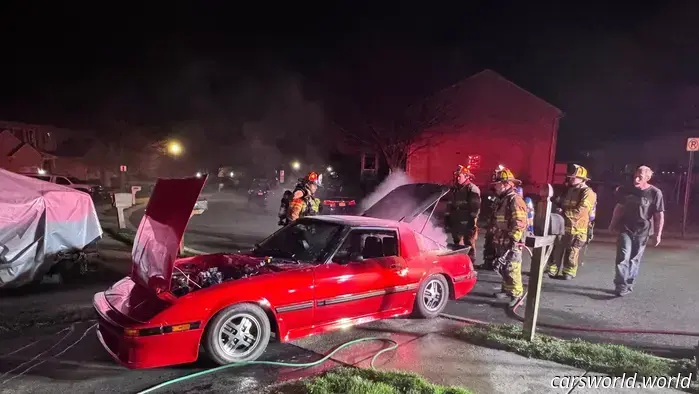 Mazda RX-7 Caught Fire Due to Trickle Charging of Lithium-Ion Battery in the Trunk
Lithium-ion batteries can experience overcharging, which can harm the cells and potentially ignite a fire. This may have been the case in this situation.
Mazda RX-7 Caught Fire Due to Trickle Charging of Lithium-Ion Battery in the Trunk
Lithium-ion batteries can experience overcharging, which can harm the cells and potentially ignite a fire. This may have been the case in this situation.
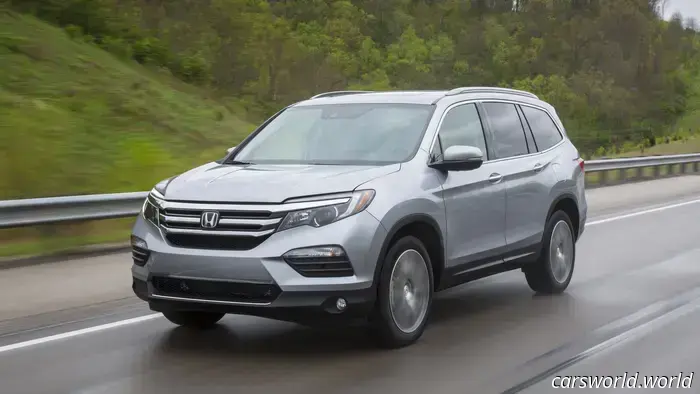 Federal Authorities Investigating 2.2 Million Hondas and Acuras Due to Frustrating Start-Stop Malfunctions
The persistent start-stop problem impacts vehicles that have a 3.5-liter V6 engine paired with a nine-speed automatic transmission.
Federal Authorities Investigating 2.2 Million Hondas and Acuras Due to Frustrating Start-Stop Malfunctions
The persistent start-stop problem impacts vehicles that have a 3.5-liter V6 engine paired with a nine-speed automatic transmission.
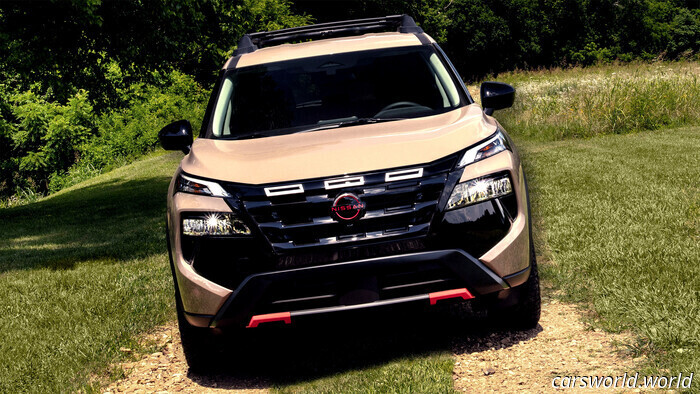 Nissan Understands Market Trends, Reduces 2025 Rogue and Pathfinder Prices as Tariffs Increase Competitors' Costs | Carscoops
We welcome any decrease in price in a market where MSRPs typically only increase.
Nissan Understands Market Trends, Reduces 2025 Rogue and Pathfinder Prices as Tariffs Increase Competitors' Costs | Carscoops
We welcome any decrease in price in a market where MSRPs typically only increase.
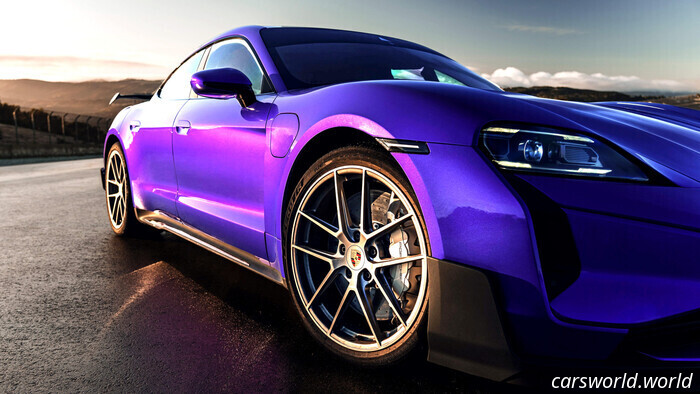 Porsche Created A Futile 2-Seater Sedan And Outpaced Tesla In Less Time Than It Took You To Read This | Carscoops
The quickest Taycan in the lineup can complete the quarter mile in an astonishing 9.23 seconds.
Porsche Created A Futile 2-Seater Sedan And Outpaced Tesla In Less Time Than It Took You To Read This | Carscoops
The quickest Taycan in the lineup can complete the quarter mile in an astonishing 9.23 seconds.
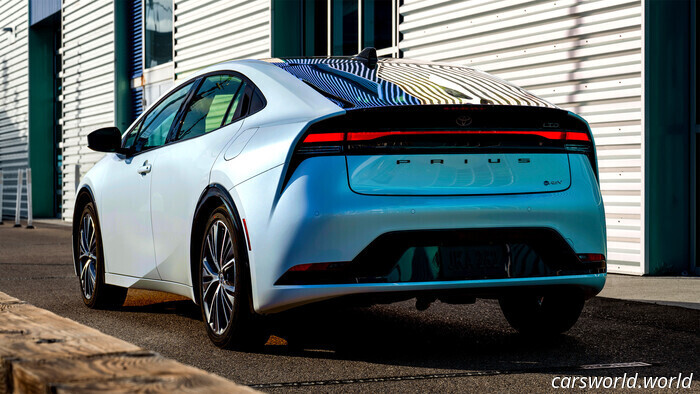 The Surge in Toyota Hybrids is Causing Buyers to Wait Months for a Minor Component | Carscoops
A buyer was informed that the delivery of his hybrid Toyota would exceed 2.5 years.
The Surge in Toyota Hybrids is Causing Buyers to Wait Months for a Minor Component | Carscoops
A buyer was informed that the delivery of his hybrid Toyota would exceed 2.5 years.
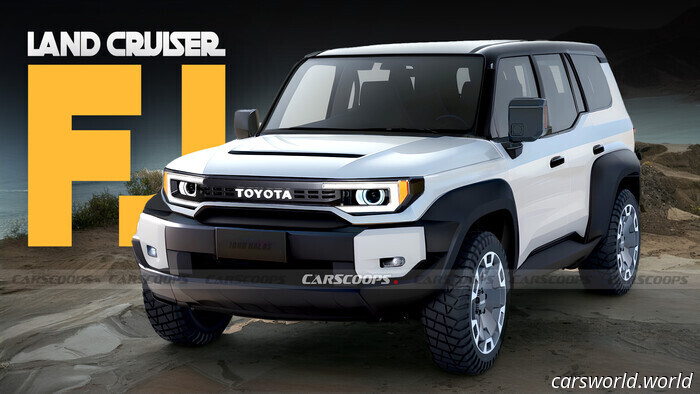 The launch of Toyota’s Baby Land Cruiser FJ has been postponed until 2026 | Carscoops
The compact Land Cruiser FJ is expected to launch in the first half of 2026, with a subsequent global release, including in North America.
The launch of Toyota’s Baby Land Cruiser FJ has been postponed until 2026 | Carscoops
The compact Land Cruiser FJ is expected to launch in the first half of 2026, with a subsequent global release, including in North America.
Snowmobiling in Yellowstone is challenging, but it's worth braving the cold for.
I spent two full days riding Ski-Doo snowmobiles with horsepower between 60 and 180, traversing a variety of terrains from flat, frozen roads to 7 feet of snow at an elevation of 9,000 feet. I was completely worn out.
